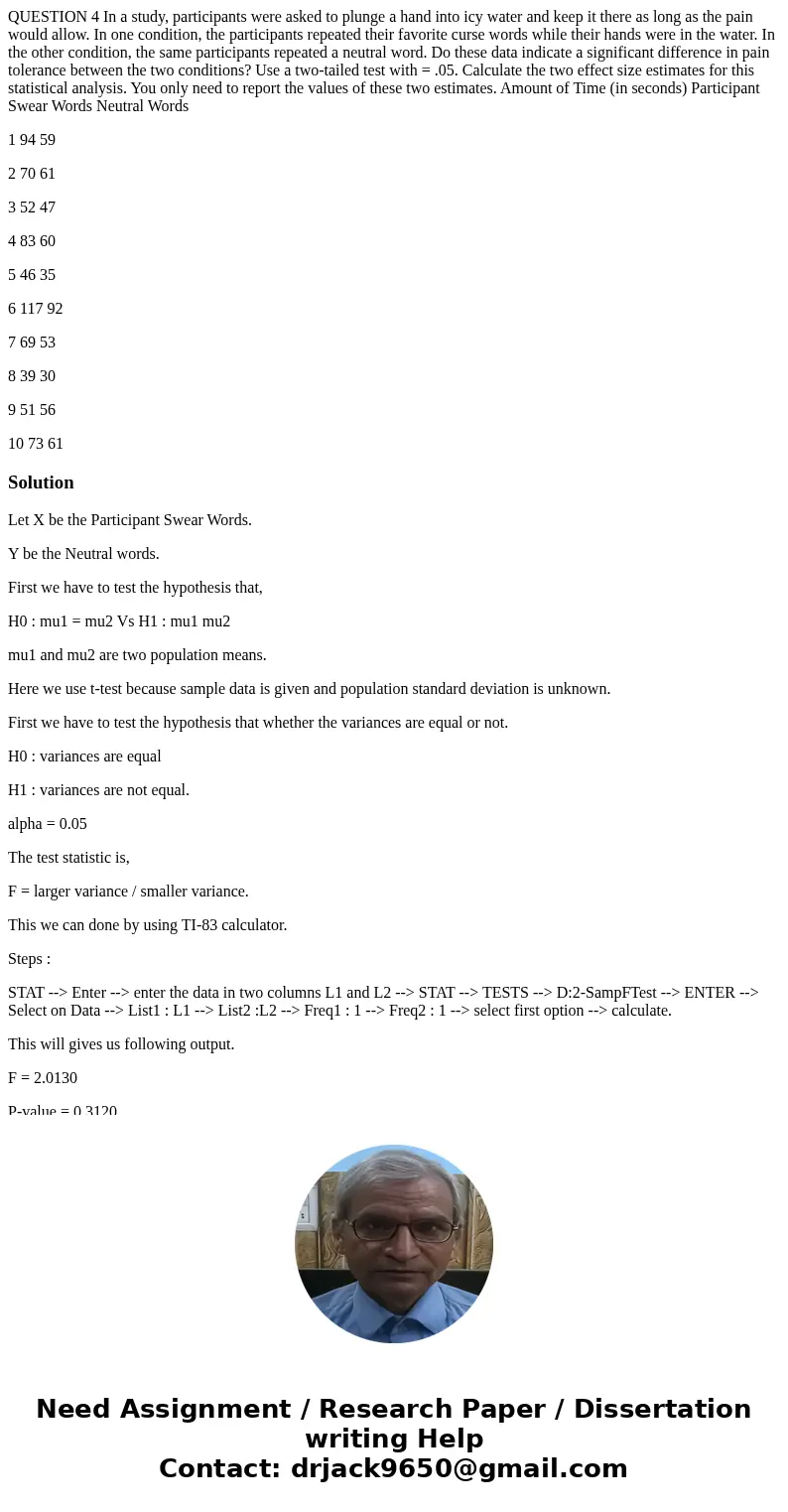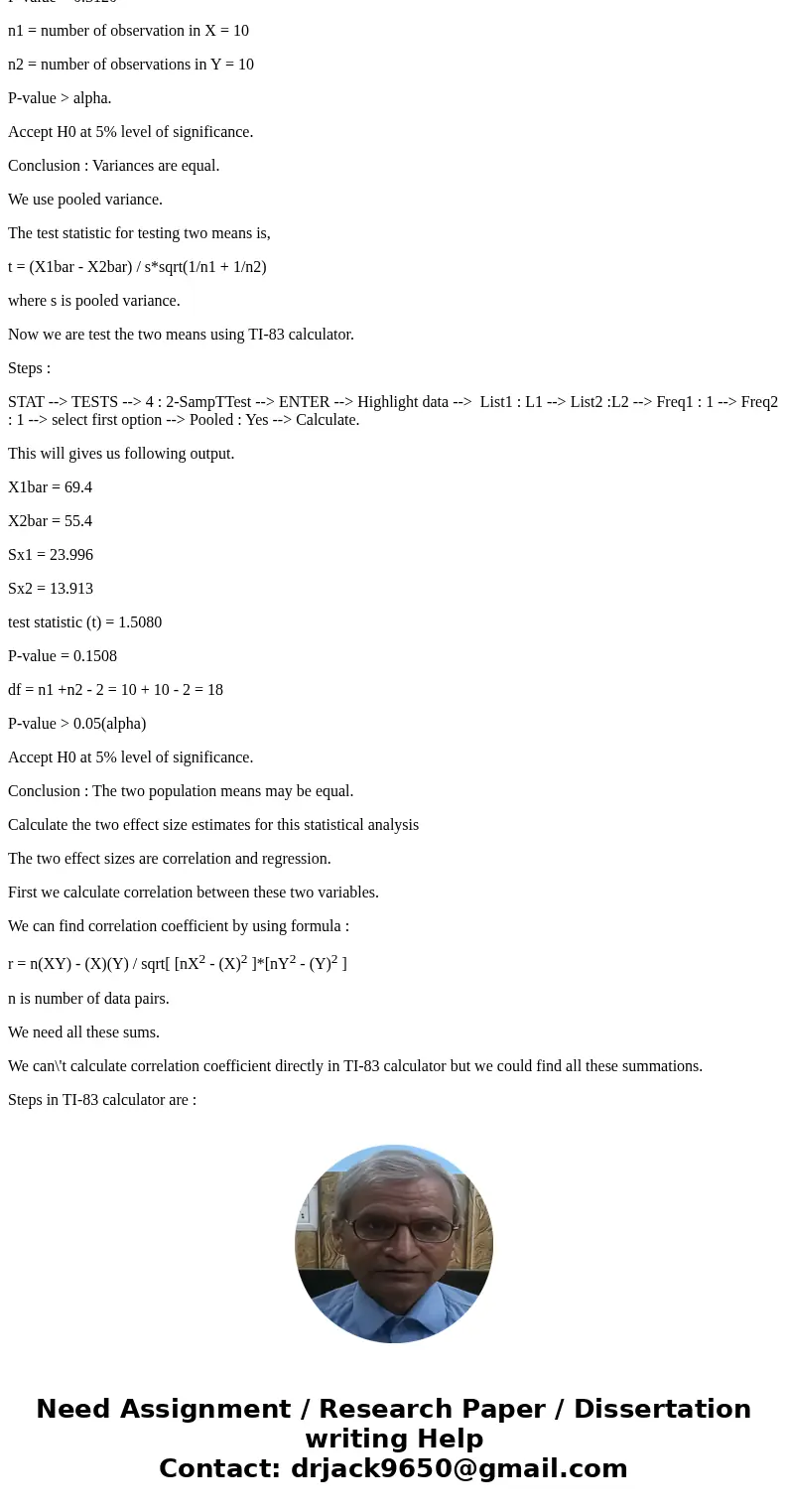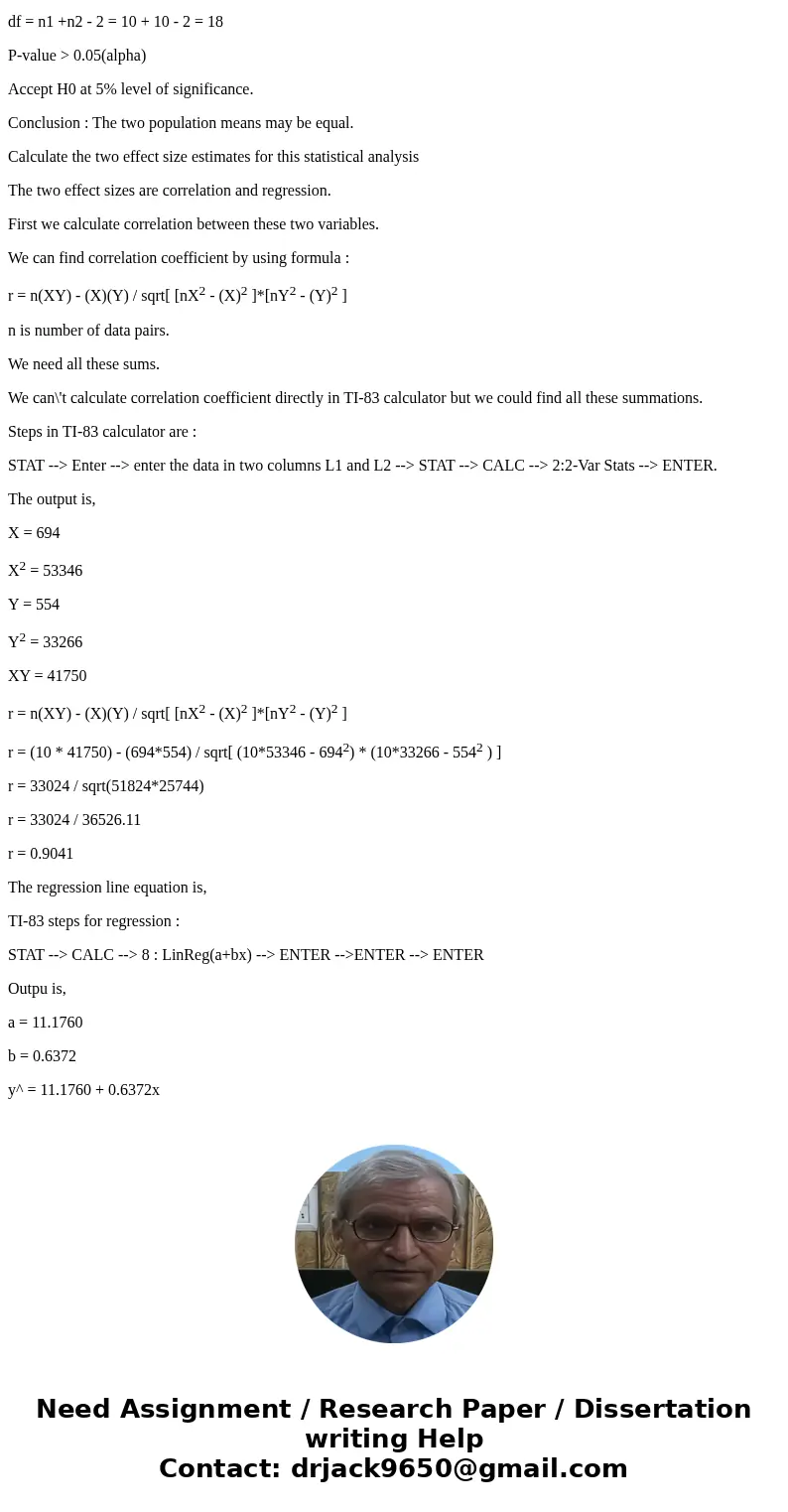QUESTION 4 In a study participants were asked to plunge a ha
QUESTION 4 In a study, participants were asked to plunge a hand into icy water and keep it there as long as the pain would allow. In one condition, the participants repeated their favorite curse words while their hands were in the water. In the other condition, the same participants repeated a neutral word. Do these data indicate a significant difference in pain tolerance between the two conditions? Use a two-tailed test with = .05. Calculate the two effect size estimates for this statistical analysis. You only need to report the values of these two estimates. Amount of Time (in seconds) Participant Swear Words Neutral Words
1 94 59
2 70 61
3 52 47
4 83 60
5 46 35
6 117 92
7 69 53
8 39 30
9 51 56
10 73 61
Solution
Let X be the Participant Swear Words.
Y be the Neutral words.
First we have to test the hypothesis that,
H0 : mu1 = mu2 Vs H1 : mu1 mu2
mu1 and mu2 are two population means.
Here we use t-test because sample data is given and population standard deviation is unknown.
First we have to test the hypothesis that whether the variances are equal or not.
H0 : variances are equal
H1 : variances are not equal.
alpha = 0.05
The test statistic is,
F = larger variance / smaller variance.
This we can done by using TI-83 calculator.
Steps :
STAT --> Enter --> enter the data in two columns L1 and L2 --> STAT --> TESTS --> D:2-SampFTest --> ENTER --> Select on Data --> List1 : L1 --> List2 :L2 --> Freq1 : 1 --> Freq2 : 1 --> select first option --> calculate.
This will gives us following output.
F = 2.0130
P-value = 0.3120
n1 = number of observation in X = 10
n2 = number of observations in Y = 10
P-value > alpha.
Accept H0 at 5% level of significance.
Conclusion : Variances are equal.
We use pooled variance.
The test statistic for testing two means is,
t = (X1bar - X2bar) / s*sqrt(1/n1 + 1/n2)
where s is pooled variance.
Now we are test the two means using TI-83 calculator.
Steps :
STAT --> TESTS --> 4 : 2-SampTTest --> ENTER --> Highlight data --> List1 : L1 --> List2 :L2 --> Freq1 : 1 --> Freq2 : 1 --> select first option --> Pooled : Yes --> Calculate.
This will gives us following output.
X1bar = 69.4
X2bar = 55.4
Sx1 = 23.996
Sx2 = 13.913
test statistic (t) = 1.5080
P-value = 0.1508
df = n1 +n2 - 2 = 10 + 10 - 2 = 18
P-value > 0.05(alpha)
Accept H0 at 5% level of significance.
Conclusion : The two population means may be equal.
Calculate the two effect size estimates for this statistical analysis
The two effect sizes are correlation and regression.
First we calculate correlation between these two variables.
We can find correlation coefficient by using formula :
r = n(XY) - (X)(Y) / sqrt[ [nX2 - (X)2 ]*[nY2 - (Y)2 ]
n is number of data pairs.
We need all these sums.
We can\'t calculate correlation coefficient directly in TI-83 calculator but we could find all these summations.
Steps in TI-83 calculator are :
STAT --> Enter --> enter the data in two columns L1 and L2 --> STAT --> CALC --> 2:2-Var Stats --> ENTER.
The output is,
X = 694
X2 = 53346
Y = 554
Y2 = 33266
XY = 41750
r = n(XY) - (X)(Y) / sqrt[ [nX2 - (X)2 ]*[nY2 - (Y)2 ]
r = (10 * 41750) - (694*554) / sqrt[ (10*53346 - 6942) * (10*33266 - 5542 ) ]
r = 33024 / sqrt(51824*25744)
r = 33024 / 36526.11
r = 0.9041
The regression line equation is,
TI-83 steps for regression :
STAT --> CALC --> 8 : LinReg(a+bx) --> ENTER -->ENTER --> ENTER
Outpu is,
a = 11.1760
b = 0.6372
y^ = 11.1760 + 0.6372x



 Homework Sourse
Homework Sourse